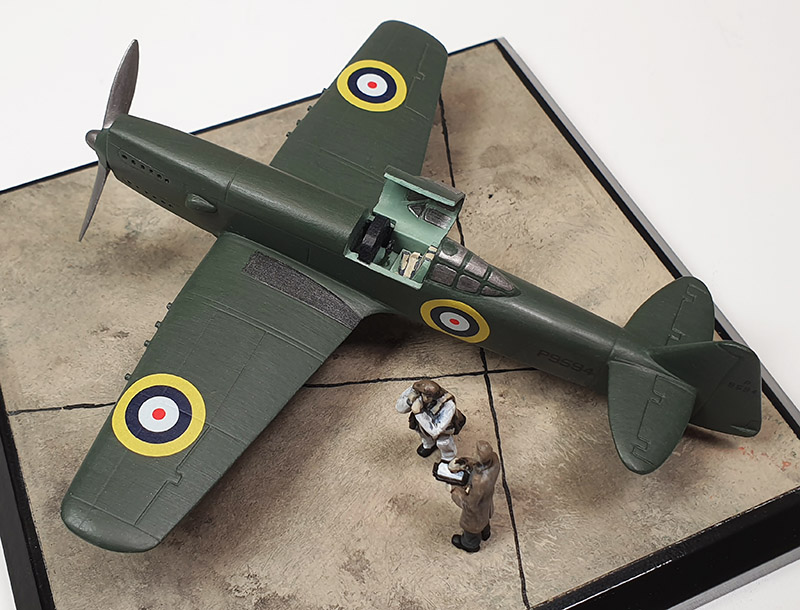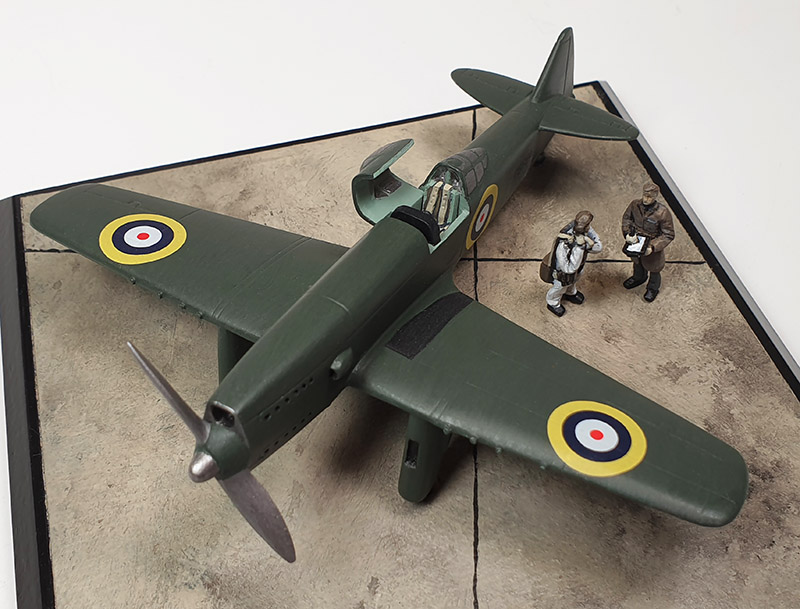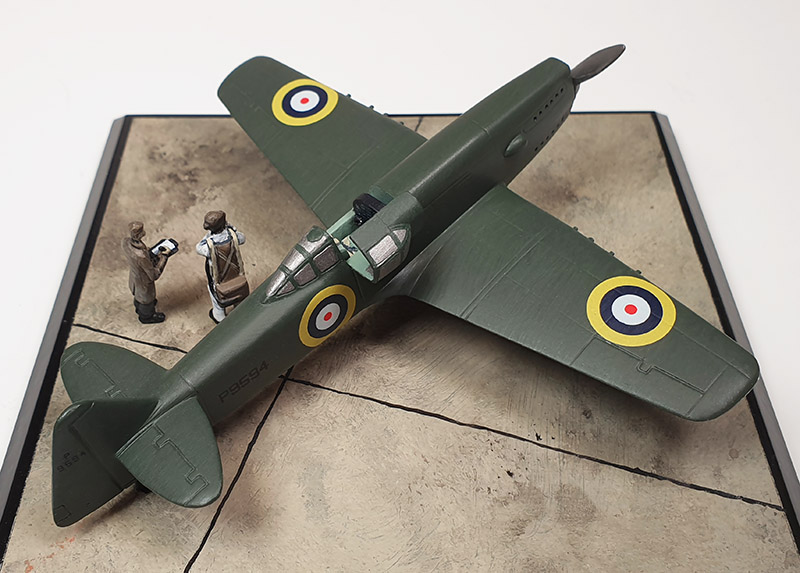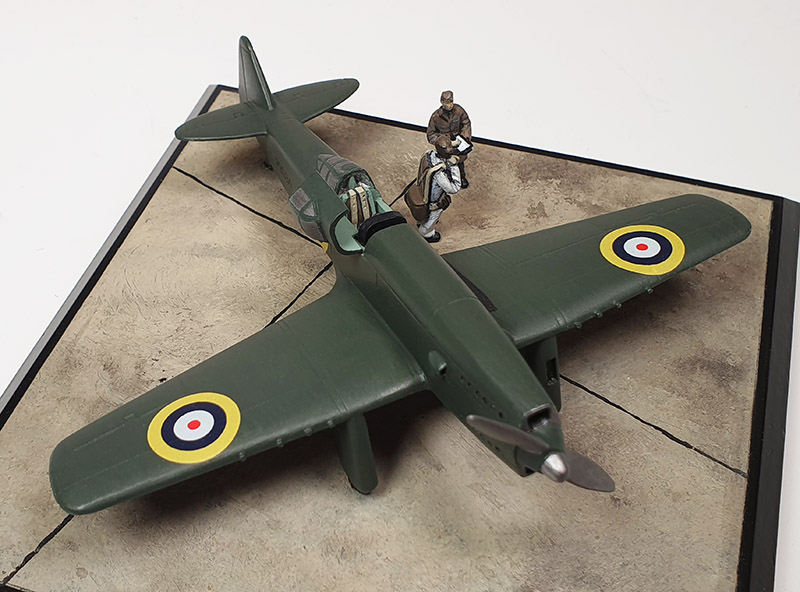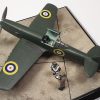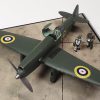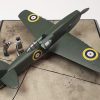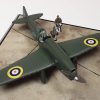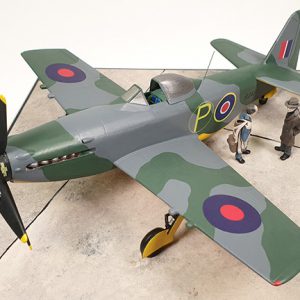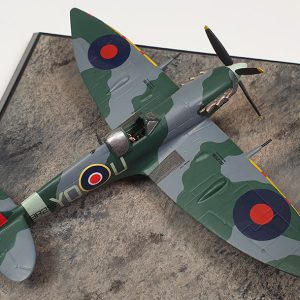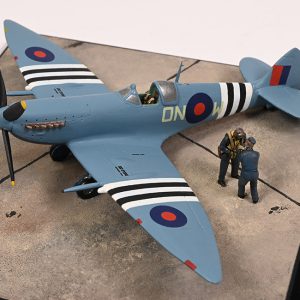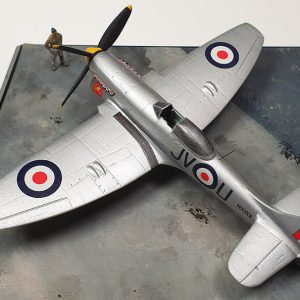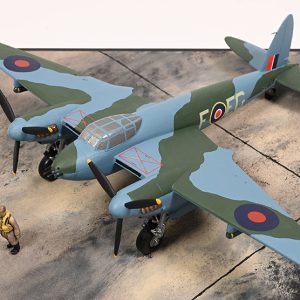Martin Baker MB 2 P9594 prototype
RAF Northolt, June 1939.
Air Ministry Specification F.5/34 called for a single-seat fighter with six or eight machine guns, a heavier armament that then usual, a retractable undercarriage and an enclosed cockpit with oxygen for the pilot; the speed at 15,000′ was to be 275 mph and the service ceiling 33,000′. Of the six designs tendered three prototypes were ordered, the Vickers Venom, the Bristol Type 146 and the Gloster F.5/34, all with Bristol radial engines; further development of the Hawker and Supermarine submissions led to the Hurricane and Spitfire, each attracting individual specifications in due course, and a new manufacturer, Martin Baker Aircraft, built its own prototype designed to meet the official requirement as far as possible as a private venture.
Formed in 1929 the Martin Aircraft Works produced a two-seat cabin monoplane; in 1934 Captain Valentine Baker joined James Martin to create the Martin-Baker Aircraft company. In the following year work was started on the MB 2, a fighter designed around F.5/34, with four .303″ Browning machine guns in a single gun-bay in each wing; it was hoped to use an early Merlin, but this proved impossible and James Martin was loaned a 1,000 hp Napier Dagger. With this, even though the undercarriage was fixed the aircraft achieved a speed of 305 mph. at 9,000′. The structure was designed to build on that used on the MB 1, to make possible use of non-aircraft industry labour, and to simplify operation and maintenance. Initially the Martin Baker MB2 had no vertical fin, the rear fuselage sides fairing in to a rudder.
Built at Denham by a group of about forty, the airfield was thought to be too small for its first flight, which was then made by Captain Baker from Harwell on 3 August 1938. A small fin was quickly added to combat instability; on delivery to the Aircraft and Armament Experimental Establishment at Martlesham Heath for testing in November the instability was still evident and the size of the fin was later further increased. The Establishment reported on the imbalance of the flying controls, with the elevators being light and the ailerons increasingly heavy, and they also thought that the “trousered” undercarriage would present maintenance problems in service. During this period the Martin Baker MB2 had, as a private venture, been allocated the civil registration G-AEZD but it carried the apparent, but misleading, ‘B’ class registration “M-B-1”. It was delivered to Northolt for further evaluation by the Air Fighting Development unit on 24 May 1939, and when taken on charge by the Air Ministry was given the serial P9594. It gave its only known public flying display on 26 May, with the Dagger engine described as sounding like “a sewing machine”.
By the end of 1938 it was evident that F.5/34 had been overtaken by events, with the developed specifications of F.35/34 and F.36/34 resulting in the Hurricane and Spitfire respectively, and with these two aircraft in production interest in producing the earlier types ceased, with the necessary resources being needed for the more advanced aircraft. The MB 2, and those other prototypes built originally to F.5/34, would now have been out of date of date had they entered production. P9594 was returned to Denham by the end of the year, and was in existence in 1942; but the airframe was dismantled and scrapped by the end of 1944, with only the propeller surviving. The structure was further developed in the subsequent, and much faster, Sabre-powered MB3 and MB5, but only one prototype of each was built; the MB5 in particular had many virtues, but was overtaken by the advent of the jet engine.


